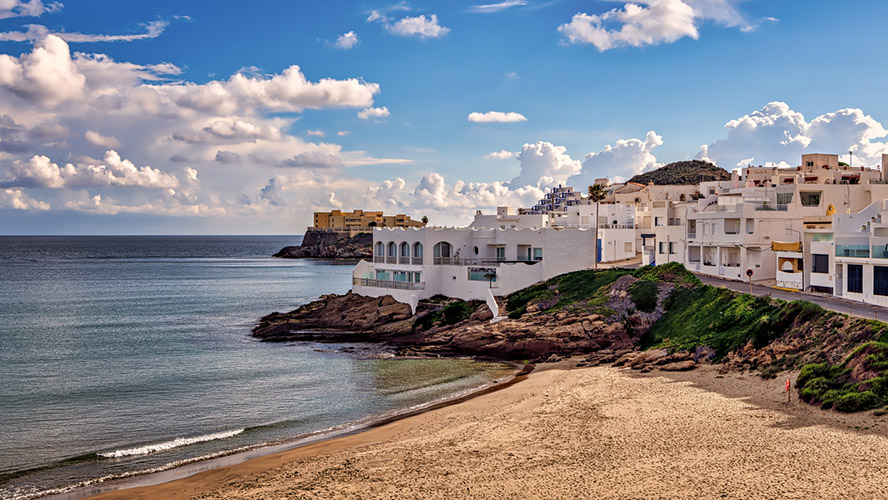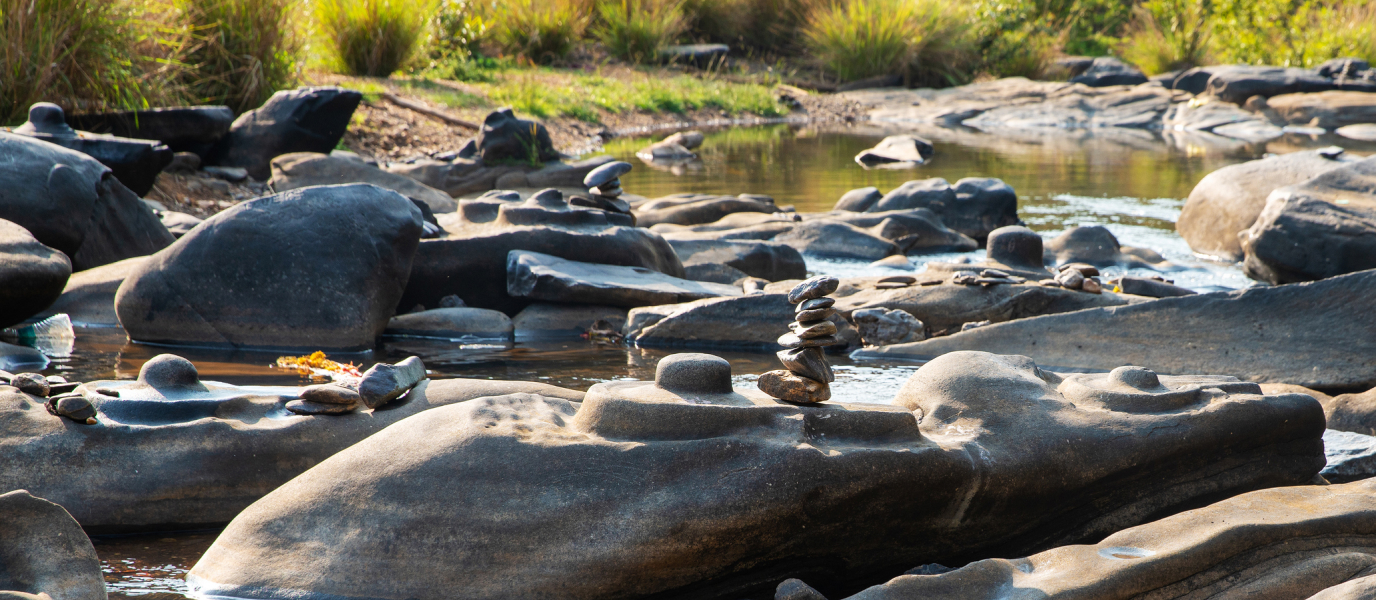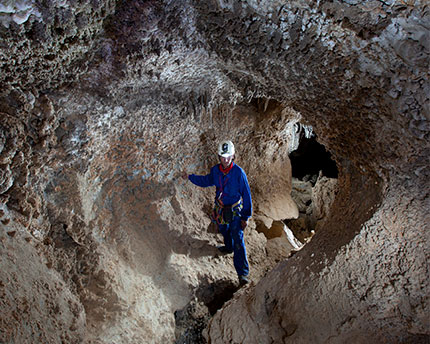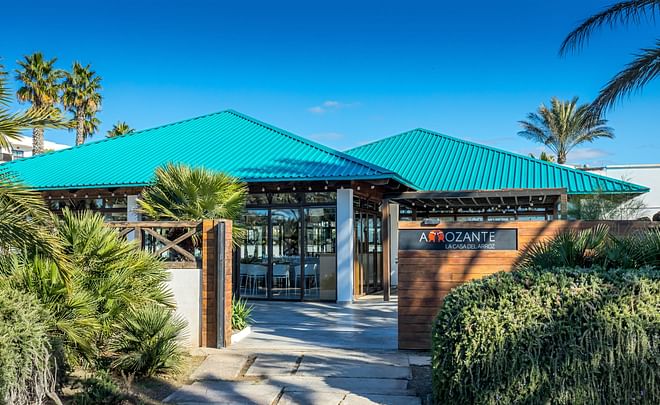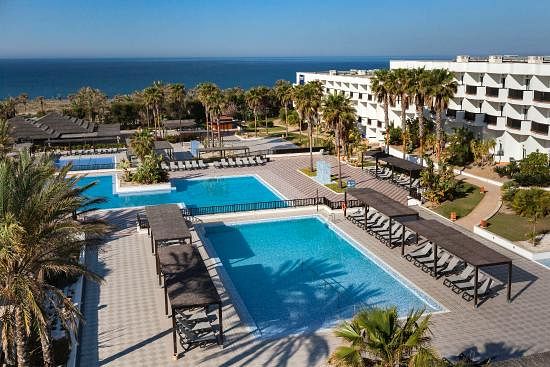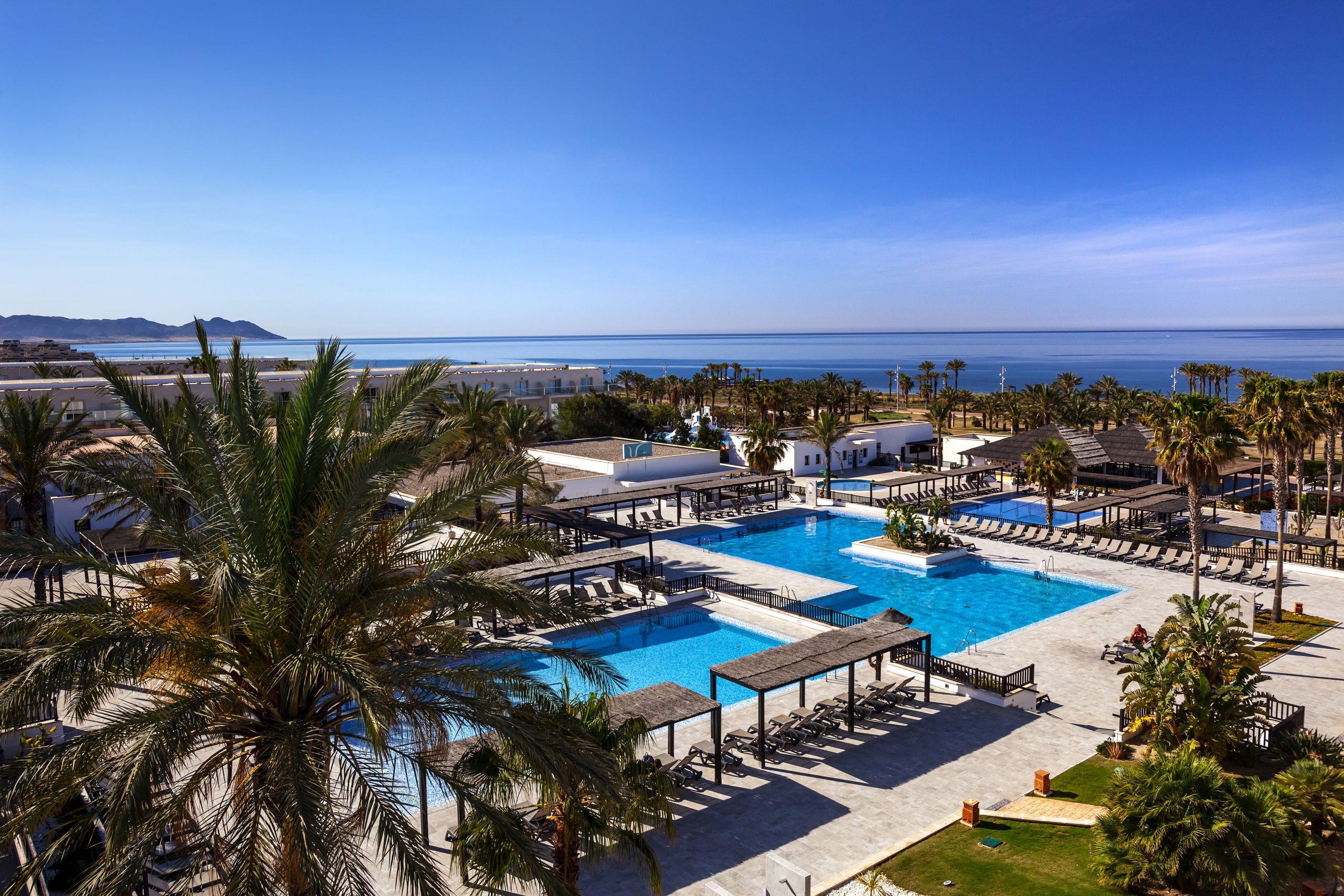The Cabo de Gata-Níjar Natural Park is most definitely a sight to behold. In spite of the many photographs and videos you may have seen of this conservation area, you will be blown away by the majestic sights and sounds it provides when you witness it first-hand.
It’s difficult for visitors to imagine that such a natural treasure could exist in this corner of the world, as they must travel through a land filled with greenhouses and a desert to reach it.
The fiery beginnings of the area are still evident in the sharp, craggy, rock formations which were formed by magma flows running into the sea. Though time and erosion have made their own mark on the rocks, they still brighten this part of the Mediterranean with their colour. When it is a sunny day, which is almost every day, the rocks are bathed in sunlight, causing the water to turn a majestic blue.
Don’t miss the Cabo de Gata lighthouse and Lookout
An extensive part of the Cabo de Gata-Níjar Natural Park is in the municipality of Níjar, which is the largest municipality in the province of Almeria. However, another large chunk of this conservation park falls inside the municipality of Carboneras.
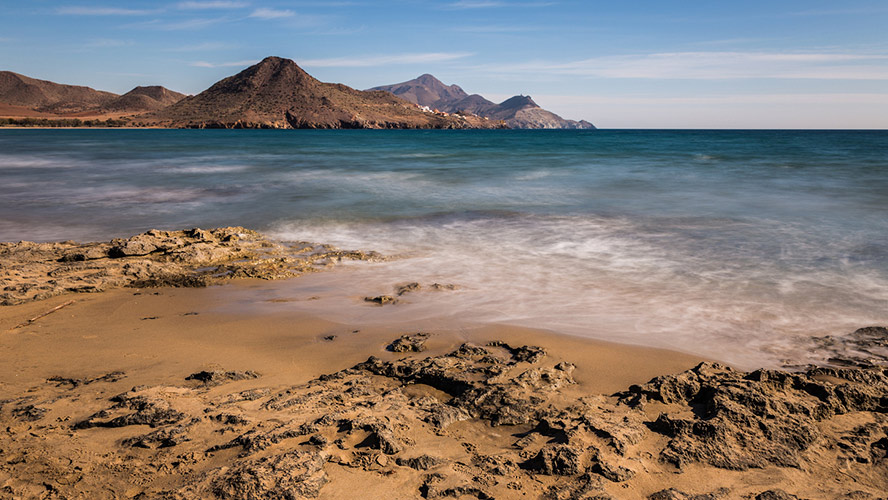
The headland, which is referred to as Cabo de Gata, is crowned by its emblematic lighthouse. The lighthouse was constructed in 1863 upon the ruins of the Castle of San Francisco de Paula. It was always an important reference point for sailors, having had bonfires upon it to guide sailors since the days of Greek colonisation.
The lighthouse stands 18 metres tall, and sits upon the 45-metre-tall promontory. This bluff has been used to light sailors’ ways since antiquity due to the existence of a reef called ‘Laja del Cabo’. This reef, which is around a nautical mile from the coast, has been the cause of many shipwrecks along the centuries.
Next to the lighthouse, you’ll find the mirador, which is called ‘Las Sirenas’, It is one of the best viewpoints to truly appreciate the sheer size and beauty of the Cabo de Gata-Níjar Natural Park.
Things to see at Cabo de Gata
The Cabo de Gata-Níjar Natural park is replete with natural areas, whose value in geological and biological terms is staggering. The two beaches, Las Salinas and Corralete Cove, which are closest to the headland, are two such examples. However, there are also some other, lesser known sites that are worthy of mention. Here are a couple we recommend:
-
San José:
This enchanting place, with its picturesque whitewashed houses, is the largest village in the Cabo de Gata-Níjar Natural Park. Furthermore, it is flanked by two of the most spectacular beaches in the area; Mónsul and Los Genoveses.
-
Las Negras
This traditional fishing village, nestled near the volcanic rock ‘The Black Mountain’ from which it gets its name, still holds a great deal of its charm. Nowadays, after the construction of some holiday villas and tourist facilities, the village caters for a large number of tourists, especially during the summer months.
-
Níjar
Featured on the list of ‘The Most Beautiful Villages in Spain’, Níjar is definitely worth a visit. With its deep tradition in weaving, it is commonplace for visitors to pick up one of the characteristically Almerian rugs, which are made here, as a souvenir.
The Curious Village of Cabo de Gata
Cabo de Gata is the name of not only the park, but also a small village therein. This village is better described as a neighbourhood as it falls within the municipality of the city of Almeria. Its official name is San Miguel del Cabo de Gata and it is the most populated area on this southern tip.
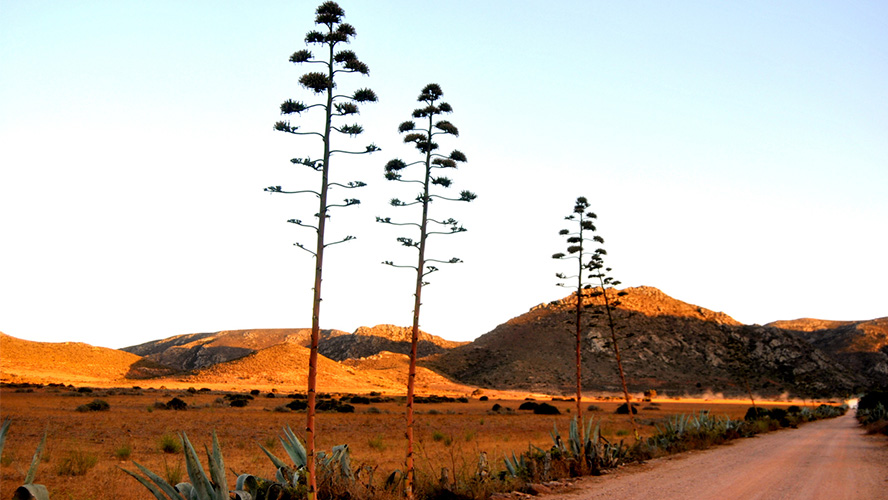
Many visitors come to spend a relaxing time on its urban beach, called San Miguel. This beach, with its fine white sands, is one of the pristine beaches that makes up this coast, which stretches over 12 km from Torre Garcia to the geographical headland, Cabo de Gata.
Close to the village, you’ll find the Cabo de Gata Salt Works. These are the only salt lakes which are permanently active in this part of Andalucia and have been in use since the times of the Ancient Greek colonisers. Aside from the economic benefits that the salt works bring to the region, they are also highly valued for their rich biodiversity. This is especially true with regards to acting as nesting and feeding sites for many species of birds during their migrations from Europe to Africa.
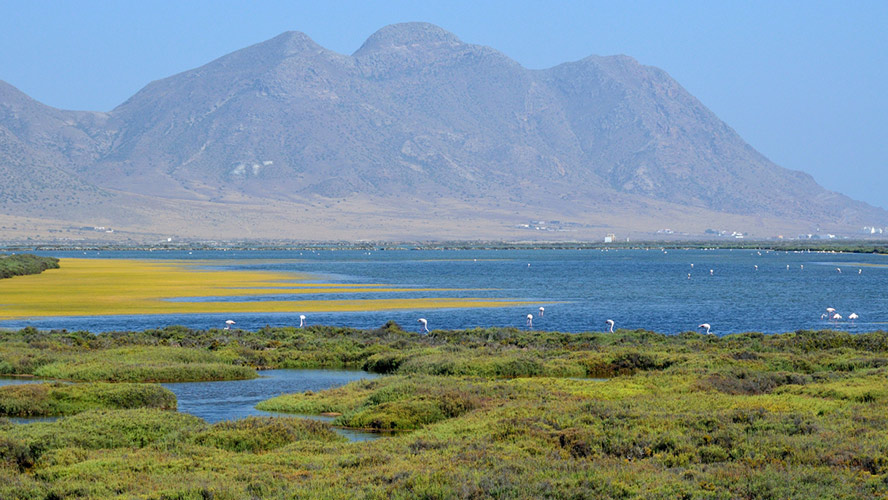
It is also worth visiting the Centro de Interpretación de la Naturaleza de Las Amoladeras. This interpretation centre for nature studies provides a deeper insight into the wildlife and other aspects of the natural environment in Cabo de Gata-Níjar Natural Park.
The Best Hiking Trails in Cabo de Gata
Aside from the beaches, for those who would like to have a deeper understanding of the park, there are also a number of hiking trails that reveal some of the hidden delights of the area. Here are some that we recommend:
-
Las Amoladeras Trail.
Starting from the aforementioned interpretation centre, this trail will take you on a 7km loop that will let you see the heart of the park’s interior and the impressive geological formations which arose from its volcanic beginnings.
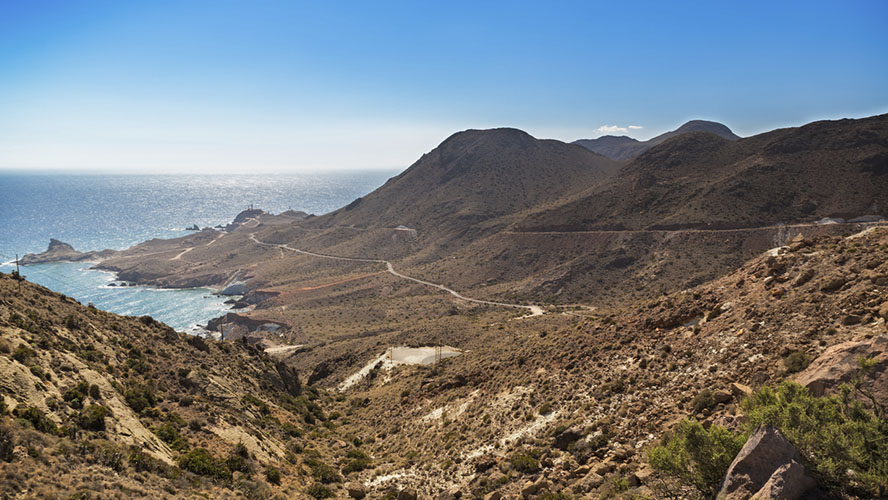
-
San José-Los Genoveses.
This trail allows you to take in the beauty of this immaculate beach and its pristine waters. At about 5 km in total, including the return trek, this trail is perfect for families with young children.
-
Barranco del Hondo y Mesa Roldán.
This hiking trail begins in Carboneras and will take you on a 10 kilometre route through the park’s interior and along some of its coastal cliffs. It is possible to extend the trail a further 1.5 km if you wish, so that you can visit the viewpoint overlooking Playa de los Muertos.
-
Loma Pelada:
This route will take you on a 13 km round trip. You can start at either Los Escullos or San Jose and enjoy some of the most beautiful landscapes, sights and, sounds that are found in the Cabo de Gata-Níjar Natural Park. If you are looking to do this trail in the summer time, we recommend that you begin the hike early to avoid too much time in the midday sun.





























































